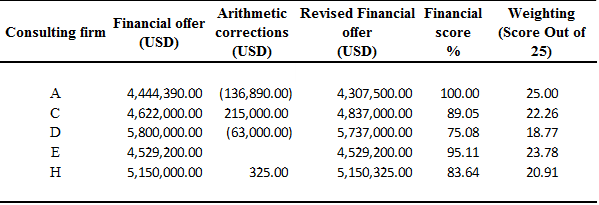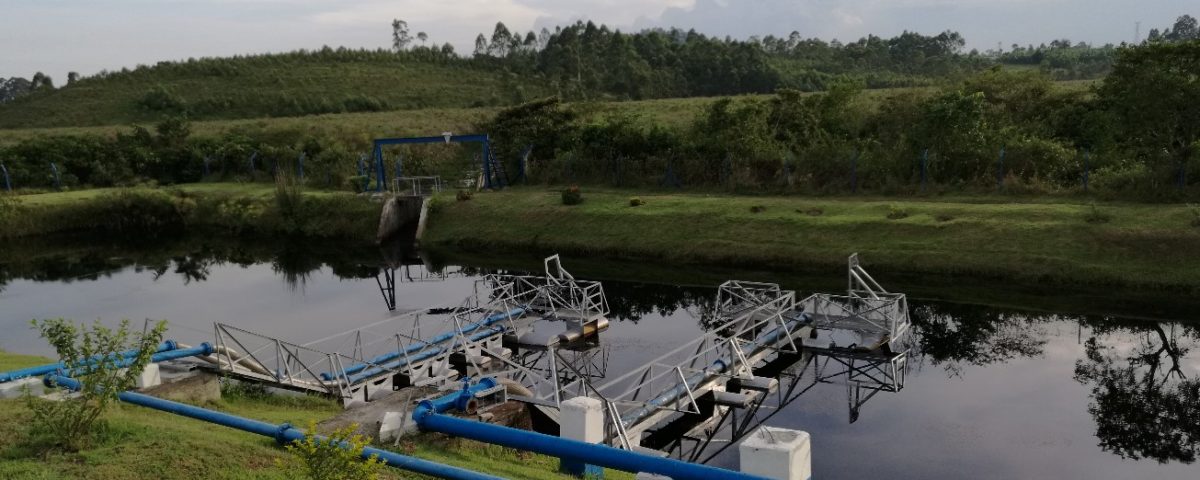Selection of consultants to undertake large infrastructure projects – Part Three
Part 2 of the selection process concluded with the submission of the technical evaluation report to the financier, who approved the report after four weeks of correspondence and dialogue.
When I received the news of the approval, I immediately called Jeremy and informed him that we were commencing the third stage of the selection process. Around that time, Jeremy was on the verge of completing his internship north of the capital. On receiving my call, he terminated his stint on site and was at my desk on the day the financial proposal opening was scheduled.
Me: Hello Jeremy, Welcome back. I hope your field experience was worth it.
Jeremy: Yes, Thank you Cyrus. It is great to be back. Where are we in the selection process?
Me: After the financier issued a No objection to the technical evaluation report, we issued formal notifications to the unsuccessful and successful consultants.
To the former, we (the employer) highlighted the reasons for failure to meet the minimum score for qualification and proceed to the next stage of the selection process, and in accordance with the Request for Proposal (RFP) guidelines, their financial proposals were returned unopened.
To the latter, we issued a congratulatory note and a formal invitation to the opening of the financial proposals. This morning, in a few minutes from now, we will open the financial proposals of the successful consulting firms.
Opening of the financial proposals
In the presence of representatives from the consulting firms and the employer, the chairperson of the evaluation committee read out the names of the successful consulting firms and their technical scores.
Thereafter, and in no particular order, each financial proposal was opened and the costs read out. For the avoidance of doubt, it was communicated to all consulting firms that words would prevail over figures in case there is a discrepancy between the amount stated and the figures indicated in the financial offer.
Thereafter, and in no particular order, each financial proposal was opened and the costs read out. For the avoidance of doubt, it was communicated to all consulting firms that words would prevail over figures in case there is a discrepancy between the amount stated and the figures indicated in the financial offer
Jeremy took a record of the proceedings and collected signatures from all those in attendance. A summary of the financial offers from the five successful firms i.e. firms A, C, D, E and H were tabulated as indicated below.

The financial evaluation
The morning after, Jeremy was back at my desk with a notebook, ready to ask a series of questions as the evaluation proceeded.
Jeremy: Is there a minimum price, based on which the evaluation team can accept or reject a consultant’s financial offer?
Me: No, there isn’t. The financial offers are based on the terms of reference in the RFP. Our assumption is that the services to be rendered are understood by the consultants. One of the key tasks of the evaluation team is to ensure that the costs therein are consistent with the consultant’s technical proposal.
For instance, design assignments are lump sum whereas assignments for supervision of construction works are time-based. We compare the time inputs allocated to lump sum and time-based assignments in the financial proposal with what was proposed in the technical proposal.
We compare the time inputs allocated to lump sum and time-based assignments in the financial proposal with what was proposed in the technical proposal
For the time-based component of the services, arithmetical errors will be corrected and the time-based fees adjusted where necessary. However, the consultant’s lump-sum price for the assignment will not be subjected to any change, even if there are arithmetic errors, which increase the offer price.
Jeremy: I notice some financial offers are in three currencies. In what currency will you make payments for the services rendered?
Me: The consulting firms were allowed to quote in up to three freely convertible currencies. After arithmetic checks for each consulting firm have been completed, the single currency for the conversion of all prices expressed in various currencies will be United States Dollars. This means we shall apply a EUR/USD and GBP/USD exchange rate to the portions in Euros and Dollars.
Jeremy: Which specific exchange rates apply?
Me: The exchange rate to apply is stated in the RFP as – the rate seven calendar days prior to the proposal submission deadline.The source of the cross (exchange) rates is obtained from the Central Bank in the country where the consultancy services will be rendered.
The following were the results of the arithmetic corrections from the evaluation exercise – all converted to USD. Thereafter, the financial scores for each consulting firm were derived using the formula below and the corresponding weight (out of 25 points) for each consulting firm computed.
Financial score = 100 x (Lowest price) / (Price of the proposal under consideration)

Jeremy: I suppose the overall ranking of the best firm is based on the technical score (weighted at 75) at the second stage of the evaluation exercise and the financial score (weighted at 25) at this stage of the selection process.
Me: Yes, from the results, it appears that consulting firm H will be awarded the consultancy services contract.

Jeremy: It appears a good technical proposal counts for a lot more than a very competitive price. Is that always the case?
Me: It is a combination of technical competence and competitive pricing. However, during preparation of the RFP, one has to exercise a high level of professional judgement in determining the weights assigned to the technical and financial proposals. In this case, we adopted 75/25. It could have been 70/30 or 80/20 and the results would have been different.
It is a combination of technical competence and competitive pricing. However, during preparation of the RFP, one has to exercise a high level of professional judgement in determining the weights assigned to the technical and financial proposals.
Jeremy: So, what next?
Me: We complete the evaluation report and submit the combined technical and financial evaluation report to the financier for their No Objection. The report will include a recommendation to invite consulting firm H for pre-contract negotiations.
Once pre-contract negotiations are concluded, and all approvals secured from the financier, the contract will be signed and implementation will commence.
Jeremy: Negotiate what?
Me: Cost aside, this selection process reveals good technical ideas that the client can insist, are adopted from the proposals of other consulting firms, and embedded in the contract with firm H as well as weaknesses in H’s proposal that should be excluded from their proposed work method.
Pre-contract negotiations seek to address issues related to but not limited to:-
- Methodology and work plan
- Staffing – the employer might want to replace some staff
- Payment schedule and taxes – A schedule of payments for the lump sum assignment as well as the breakdown of applicable taxes are agreed upon and finalised at this stage.
- Arithmetic corrections – might influence the overall contract price.
- The special conditions of the contract
Jeremy: Thank you, it has been a pleasure to learn from you.
Me: You are welcome. Will you attend the contract negotiations?
Jeremy: No, tomorrow I am heading back to school to resume my studies.
Me: Okay, best wishes to you.
Jeremy: Thanks
The End
© The Builders’ Garage 2019. Permission to use this article or quotations from it is granted subject to appropriate credit being given to thebuildersgarage.com as the source.



4 Comments
Thanks for this article. It simplifies the selection criteria! Looking forward to the next stage.
Mary,
Thanks for dropping by.
This is absolutely incredible overview of the selection process for consultants. Its brief, precise and yet so enriching for practicing engineers. How I wish I had the opportunity to read part 1 to able understand who Jeremy is , in this case.
Dear Kennedy,
Thanks for dropping by.
Part one is available on this website